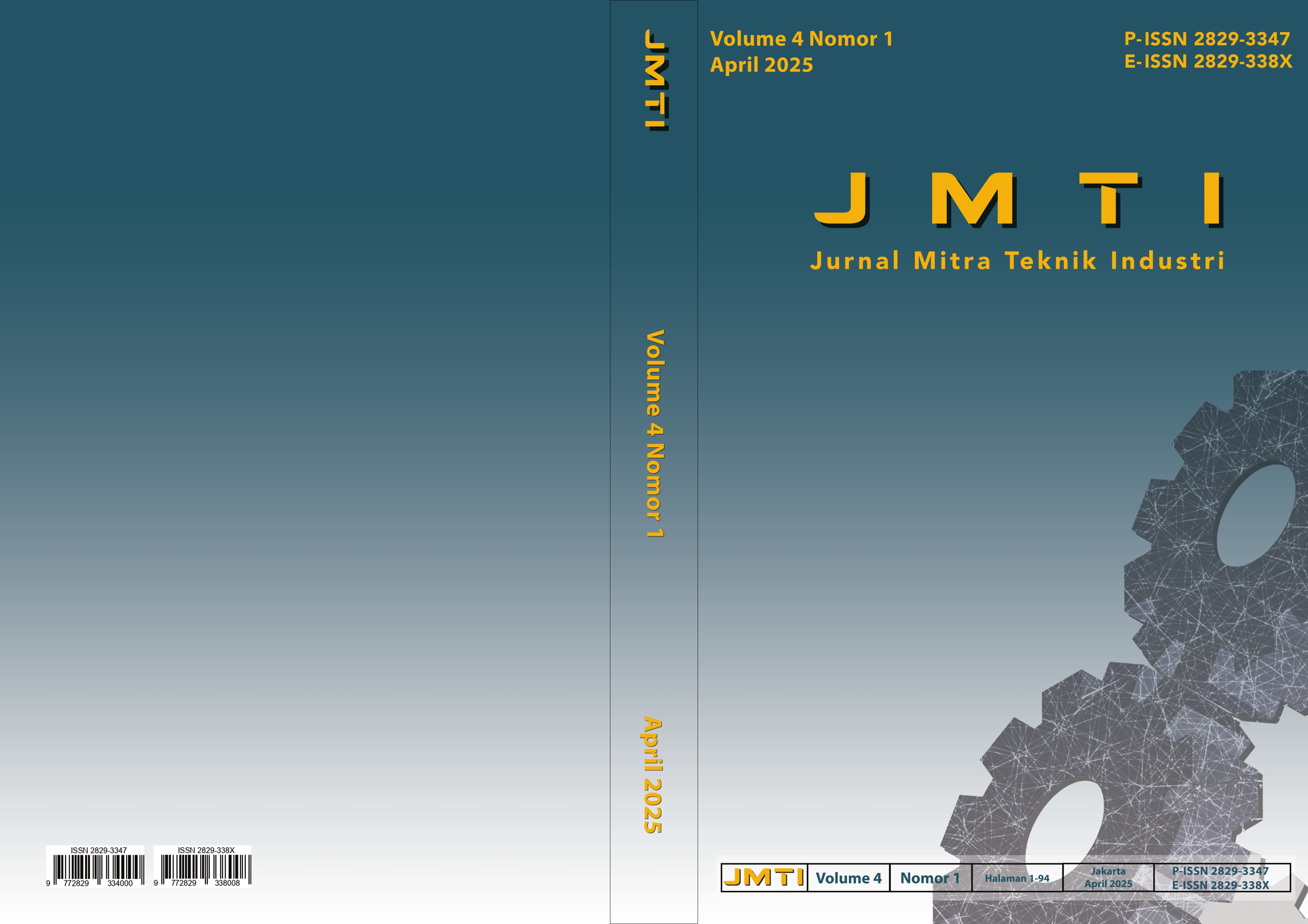PENERAPAN METODE FUZZY DALAM PENENTUAN PRIORITAS PENGURANGAN PEMBOROSAN (WASTE) DENGAN PENDEKATAN LEAN DI UNIT RAWAT JALAN SUATU RUMAH SAKIT
Isi Artikel Utama
Abstrak
Hospitals are health facilities that provide medical services and care for patients. Every hospital is always required to maintain and quality of service in order to achieve customer satisfaction and improve efficiency. Lean Management can be used as an approach to improve service quality and efficiency. The first step of improvement is to identify waste in the hospital. This article aims to discuss identification of waste in the outpatient unit of a hospital. Furthermore, determine the priority of waste that must be reduced (eliminated). The methods used are observation, interview and fuzzy. The results showed that the waste that is prioritized to be reduced (eliminated) are patients waiting for the next process (W2), the process of supplying repetitive drugs (OVP2), and patients waiting for registration (W1). The results of this study can be used by hospital management as a reference for making improvements, both in the outpatient unit and other service units.
Rincian Artikel

Artikel ini berlisensiCreative Commons Attribution-NonCommercial-ShareAlike 4.0 International License.
Referensi
[1] N.E. Schechter and S.T. Wegener, “The Johns Hopkins Patient Engagement Program: Improving Patient Engagement, Improving Patient Outcomes,” Qual. Manag. Healthc., vol. 31, no. 2, 2022, [Online]. Available: https://journals.lww.com/qmhcjournal/fulltext/2022/04000/the_johns_hopkins_patient_engagement_program_.9.aspx
[2] A. Vanichchinchai, “Relationships among lean, service quality expectation and performance in hospitals,” Int. J. Lean Six Sigma, vol. 13, no. 2, pp. 457–473, 2022, doi: 10.1108/IJLSS-11-2020-0210.
[3] W. Afriana, F. Zulyani, and T. Kurniawan, “Application of Lean Six Sigma Method in Hospital Management Process: Performance Optimization and Waste Reduction,” Endless Int. J. Futur. Stud., vol. 6, no. 3, pp. 172–184, 2023, doi: 10.54783/endlessjournal.v6i3.212.
[4] M.V. Ciasullo, A. Douglas, E. Romeo, and N. Capolupo, “Lean Six Sigma and quality performance in Italian public and private hospitals: a gender perspective,” Int. J. Qual. Reliab. Manag., vol. 41, no. 3, 964-989, 2023, doi: 10.1108/IJQRM-03-2023-0099.
[5] E. Mitreva and F. Kirovski, “Application of the Methodology of Six Sigma in Public Health Institution,” SAR J. - Sci. Res., vol. 4, no. 3, pp. 107–113, 2021, doi: 10.18421/sar43-02.
[6] A. Daly, S.P. Teeling, M. Ward, M. McNamara, and C. Robinson, “The use of lean six sigma for improving availability of and access to emergency department data to facilitate patient flow,” Int. J. Environ. Res. Public Health, vol. 18, no. 21, 2021, doi: 10.3390/ijerph182111030.
[7] M.S.A. Ansari, “Lean Six Sigma in Healthcare: Some Sobering Thoughts on Implementation,” Proc. Eng. Sci., vol. 4, no. 4, pp. 457–468, 2022, doi: 10.24874/PES04.04.007.
[8] A. Laureani, M. Brady, and J. Antony, “Applications of Lean Six Sigma in an Irish hospital,” Leadersh. Heal. Serv., vol. 26, no. 4, pp. 322–337, 2013, doi: 10.1108/LHS01-2012-0002.
[9] A. Pierce, S.P. Teeling, M. McNamara, B. O’Daly, and A. Daly, “Using Lean Six Sigma in a Private Hospital Setting to Reduce Trauma Orthopedic Patient Waiting Times and Associated Administrative and Consultant Caseload,” Healthc., vol. 11, no. 19, 2023, doi: 10.3390/healthcare11192626.
[10] J. Rodriguez, “Improving Patient Flow with Lean Methodology: A Case Study at the Montreal General Hospital Colorectal Department,” Concordia University, 2013.
[11] T.Y.R. Syah, A. Nurohim, and D.S. Hadi, “Lean Six Sigma Concept in The Health Service Process in The Universal Health Coverage of BPJS Healthcare (Healthcare and Social Security Agency),” Proceeding 3rd Int. Conf. Accounting, Bus. Econ., pp. 71– 88, 2019, [Online]. Available: https://journal.uii.ac.id/icabe/article/download/14696/9919/35383
[12] M.M. Valdez et al., “Utilizing Lean Six Sigma Methodology to Improve the Authored Works Command Approval Process at Naval Medical Center San Diego,” Mil. Med., vol. 183, no. 9, pp. E405–E410, 2018, doi: 10.1093/milmed/usy010.
[13] I.A. Rawabdeh, “A model for the assessment of waste in job shop environments,” Int. J. Oper. Prod. Manag., vol. 25, no. 8, pp. 800–822, 2005, doi: 10.1108/01443570510608619.
[14] W. Kosasih, I.K. Sriwana, E.C. Sari, and C.O. Doaly, “Applying value stream mapping tools and kanban system for waste identification and reduction (case study: a basic chemical company), ” IOP Conf. Ser.: Mater. Sci. & Eng., 528(1), 2019, 012050, doi: 10.1088/1757-899X/528/1/012050.
[15] W. Kosasih, I.N. Pujawan, P.D. Karningsih, “Conceptual Model of Integrated LeanGreen Practices and Supply Chain Sustainability for Manufacturing SMEs, ” the 5th European Conf. of IEOM, 1913-1925, 2023, doi: 10.46254/EU05.20220381.
[16] K.A. El-namrouty and M.S. Abushaaban, “Seven wastes elimination targeted by lean manufacturing case study “ gaza strip manufacturing firms,” Int. J. Econ. Financ.Manag. Sci., vol. 1, no. 2, pp. 68–80, 2013, doi: 10.11648/j.ijefm.20130102.12.



